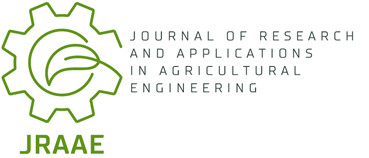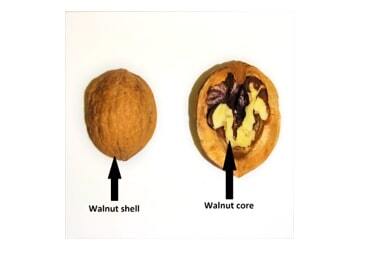Current issue
Online First
Archive
Instructions for Authors
Guide for Authors
Peer Review Policy
Research Ethics Policy
Ghostwriting and Guest Authorship
Copyright
Open Access Policy
Plagiarism
About the Journal
Aim and Scope
Scientific Board
Publisher
Editorial Board
Indexing in Databases
Personal Data Protection
Repository Policy
Contact
ORIGINAL PAPER
Determination of Minor Elements in Walnut Shells (Juglans regia L.)
1
Poznań Institute of Technology, Poznan, Poland, Łukasiewicz Research Network, Poland
Submission date: 2024-12-04
Acceptance date: 2024-12-04
Online publication date: 2024-12-04
Corresponding author
Dawid Matusiak
Poznań Institute of Technology, Poznan, Poland, Łukasiewicz Research Network, Poznań, Poland
Poznań Institute of Technology, Poznan, Poland, Łukasiewicz Research Network, Poznań, Poland
Journal of Research and Applications in Agricultural Engineering 2024;69(2)
KEYWORDS
TOPICS
ABSTRACT
The content of individual macro- and micro-elements in solid biofuels has a significant impact on the processes involved in their combustion. An excessively high content of certain elements can lead to the formation of sludge or corrosion of furnaces. It is therefore important that a raw mate-rial used for energy purposes should meet the requirements contained in specialised standards for the energy industry. The main purpose of this study was to obtain information on the content of some minor elements in walnut shells, a potentially widely used raw material for energy purposes. It investigated the content of minor elements (Cr, Cd, As, Cu, Ni, Zn, Pb, Hg) in walnut (Juglans regia L.) shells from three locations in Poland. The trees where the nuts were harvested were not subjected to any chemical treatment that could affect the results of the study. In addition, the paper includes information on global walnut production. The study shows that it is possible to use walnut shells as a material for solid biofuels. The values obtained are generally lower than those for broadleaf and coniferous wood.
REFERENCES (36)
1.
A. Szwanda, Z. Starowicz, J. Janicki, and R. Fryczkowski, ‘Wpływ domieszkowania halogenkami metali alkalicznych na właściwości warstw perowskitowych w ogniwach słonecznych’, Polish Journal of Materials and Environmental Engineering, pp. 66–78, 2023, doi: 10.53052/pjmee.2023.6.07.
2.
[2] P. Kongto et al., ‘Intensive exploration of the fuel characteristics of biomass and biochar from oil palm trunk and oil palm fronds for supporting increasing demand of solid biofuels in Thailand’, Energy Reports, vol. 8, pp. 5640–5652, Nov. 2022, doi: 10.1016/j.egyr.2022.04.033.
3.
[3] L. S. Angulo-Mosquera, A. A. Alvarado-Alvarado, M. J. Rivas-Arrieta, C. R. Cattaneo, E. R. Rene, and O. García-Depraect, ‘Production of solid biofuels from organic waste in developing countries: A review from sustainability and economic feasibility perspectives’, Science of The Total Environment, vol. 795, p. 148816, Nov. 2021, doi: 10.1016/j.scitotenv.2021.148816.
4.
[4] A. G. Olabi et al., ‘Emerging Technologies for Enhancing Microalgae Biofuel Production: Recent Progress, Barriers, and Limitations’, Fermentation, vol. 8, no. 11, p. 649, Nov. 2022, doi: 10.3390/fermentation8110649.
5.
[5] P. Vignesh, V. Jayaseelan, P. Pugazhendiran, M. S. Prakash, and K. Sudhakar, ‘Nature-inspired nano-additives for Biofuel application – A Review’, Chemical Engineering Journal Advances, vol. 12, p. 100360, Nov. 2022, doi: 10.1016/j.ceja.2022.100360.
6.
[6] Traktat o funkcjonowaniu Unii Europejskiej (wersja skonsolidowana). 2012. Accessed: Feb. 20, 2024. [Online]. Available: https://eur-lex.europa.eu/LexU....
7.
[7] Dyrektywa Parlamentu Europejskiego i Rady (UE) 2018/2001 z dnia 11 grudnia 2018 r. w sprawie promowania stosowania energii ze źródeł odnawialnych (wersja przekształcona). 2018. Accessed: Feb. 20, 2024. [Online]. Available: https://eur-lex.europa.eu/lega....
8.
[8] ‘Energia ze źródeł odnawialnych w 2022 r.’, Warszawa, Rzeszów, 2023. [Online]. Available: http://stat.gov.pl.
9.
[9] W. Cichy, M. Witczak, and M. Walkowiak, ‘Fuel Properties of Woody Biomass from Pruning Operations in Fruit Orchards’, Bioresources, vol. 12, no. 3, pp. 6458–6470, Jul. 2017, doi: 10.15376/biores.12.3.6458-6470.
10.
[10] B. Jagustyn, M. Kmieć, Ł. Smędowski, and M. Sajdak, ‘The content and emission factors of heavy metals in biomass used for energy purposes in the context of the requirements of international standards’, Journal of the Energy Institute, vol. 90, no. 5, pp. 704–714, Oct. 2017, doi: 10.1016/j.joei.2016.07.007.
11.
[11] Y.-N. Zou et al., ‘Metabolomics reveals arbuscular mycorrhizal fungi-mediated tolerance of walnut to soil drought’, BMC Plant Biol, vol. 23, no. 1, p. 118, Feb. 2023, doi: 10.1186/s12870-023-04111-3.
12.
[12] R. Shahi Shavvon et al., ‘Unravelling the genetic diversity and population structure of common walnut in the Iranian Plateau’, BMC Plant Biol, vol. 23, no. 1, p. 201, Apr. 2023, doi: 10.1186/s12870-023-04190-2.
13.
[13] X. Ma et al., ‘Quality Evaluation of Walnuts from Different Regions in China’, Foods, vol. 12, no. 22, p. 4123, Nov. 2023, doi: 10.3390/foods12224123.
14.
[14] H. Mu et al., ‘Physical and Chemical Properties, Flavor and Organoleptic Characteristics of a Walnut and Purple Rice Fermented Plant Drink’, Foods, vol. 13, no. 3, p. 400, Jan. 2024, doi: 10.3390/foods13030400.
15.
[15] A. Farooq et al., ‘Design and Development of Walnut Dehuller-cum-washer’, Journal of Agricultural Engineering (India), vol. 60, no. 4, Jan. 2024, doi: 10.52151/jae2023603.1821.
16.
[16] R. N. Ghosh, A. Ray, A. Sharma, and R. S. Singhal, ‘Bioactive oleogel from supercritical carbon dioxide extracted walnut (Juglans regia L.) oil as a butter substitute and utilization of the spent residue in cookie formulations’, J Agric Food Res, vol. 14, p. 100882, Dec. 2023, doi: 10.1016/j.jafr.2023.100882.
17.
[17] F. Liu, Y. He, D. Li, J. Zhang, and B. Zhao, ‘Own-rooted Walnut Propagule of Four Walnut (Juglans) Rootstocks and Main Cultivated Cultivar Liaoning 1 Acquirement through Layering under Field Conditions’, HortScience, vol. 59, no. 1, pp. 99–104, Jan. 2024, doi: 10.21273/HORTSCI17469-23.
18.
[18] H. Khan et al., ‘Population genetics informs new insights into the phytogeographic history of Juglans regia L.’, Genet Resour Crop Evol, vol. 70, no. 8, pp. 2263–2278, Dec. 2023, doi: 10.1007/s10722-023-01597-6.
19.
[19] R. Fukasawa, T. Miyazawa, C. Abe, M. Bhaswant, and M. Toda, ‘Quantification and Comparison of Nutritional Components in Oni Walnut (Juglans ailanthifolia Carr.), Hime Walnut (Juglans subcordiformis Dode.), and Cultivars’, Horticulturae, vol. 9, no. 11, p. 1221, Nov. 2023, doi: 10.3390/horticulturae9111221.
20.
[20] H. Pei et al., ‘Aroma characteristics and odor source analysis of roasted Xinjiang thin-shell walnuts (Juglans regia L.) by using multivariate statistical analysis’, Food Biosci, vol. 56, p. 103312, Dec. 2023, doi: 10.1016/j.fbio.2023.103312.
21.
[21] F. Taj et al., ‘Refractance window drying of walnut kernel (Juglans regia L.)’, Discover Food, vol. 3, no. 1, p. 1, Feb. 2023, doi: 10.1007/s44187-023-00040-0.
22.
[22] M. Lenda and P. Skórka, ‘Walnut Juglans regia - a new, potentially invasive species in native flora’, 2009.
23.
[23] L. Kithi, É. Lengyel-Kónya, M. Berki, and G. Bujdosó, ‘Role of the Green Husks of Persian Walnut (Juglans regia L.)—A Review’, Horticulturae, vol. 9, no. 7, p. 782, Jul. 2023, doi: 10.3390/horticulturae9070782.
24.
[24] A. Jahanban-Esfahlan, A. Ostadrahimi, M. Tabibiazar, and R. Amarowicz, ‘A Comprehensive Review on the Chemical Constituents and Functional Uses of Walnut (Juglans spp.) Husk’, Int J Mol Sci, vol. 20, no. 16, p. 3920, Aug. 2019, doi: 10.3390/ijms20163920.
25.
[25] P. Pączkowski, ‘Properties of Eco-Friendly Composites Based on Post-Consumer Recycled Resin Filled with Walnut Shell Powder’, Polymers (Basel), vol. 15, no. 22, p. 4389, Nov. 2023, doi: 10.3390/polym15224389.
26.
[26] L. Qingyang, W. Ruohui, S. Shiman, S. Danyu, M. Runhong, and L. Yihua, ‘Comparison of different drying technologies for walnut (Juglans regia L.) pellicles: Changes from phenolic composition, antioxidant activity to potential application’, Food Chem X, vol. 20, p. 101037, Dec. 2023, doi: 10.1016/j.fochx.2023.101037.
27.
[27] A. Jahanban-Esfahlan, R. Jahanban-Esfahlan, M. Tabibiazar, L. Roufegarinejad, and R. Amarowicz, ‘Recent advances in the use of walnut (Juglans regia L.) shell as a valuable plant-based bio-sorbent for the removal of hazardous materials’, RSC Adv, vol. 10, no. 12, pp. 7026–7047, Feb. 2020, doi: 10.1039/C9RA10084A.
28.
[28] M. Ghorbani, M. A. Khalilian, F. Dastoorian, and A. N. Shahmirzadi, ‘Potential of walnut shell flour as a binder in briquette production from industrial and garden wastes’, Bioresources, vol. 19, no. 1, pp. 683–694, Dec. 2023, doi: 10.15376/biores.19.1.683-694.
29.
[29] ‘FAO. Food and Agriculture Organisation of the United Nations. Crops and livestock products’. Accessed: Feb. 08, 2024. [Online]. Available: https://www.fao.org/faostat/en....
30.
[30] M. Kozak, ‘Wykorzystanie spektrometrii ICP-MS do badania biokomponentów paliw do pojazdów samochodowych’, Nafta-Gaz, vol. 78, no. 7, pp. 550–558, Jul. 2022, doi: 10.18668/NG.2022.07.07.
31.
[31] G. Bagherian, M. Arab Chamjangali, H. Shariati Evari, and M. Ashrafi, ‘Determination of copper(II) by flame atomic absorption spectrometry after its perconcentration by a highly selective and environmentally friendly dispersive liquid–liquid microextraction technique’, J Anal Sci Technol, vol. 10, no. 1, p. 3, Dec. 2019, doi: 10.1186/s40543-019-0164-6.
32.
[32] S. Matysiak and M. Słowik, ‘Badanie akumulacji wybranych metali w wodzie z różnych ujęć rzeki Wisły’, Analit, vol. 9, pp. 41–52, 2020, [Online]. Available: http://analit.agh.edu.pl/.
34.
[34] K. Hafner-Vuk, D. Ćorić, and M. Krajišnik, ‘Development of new metrology methods for determining major elements in solid biofuels ash and establishment of results’ traceability’, Accreditation and Quality Assurance, vol. 29, no. 1, pp. 1–10, Feb. 2024, doi: 10.1007/s00769-023-01559-6.
35.
[35] M. Walkowiak, M. Witczak, M. Sajdak, and W. J. Cichy, ‘Properties of solid biofuels obtained from residues of wood-based materials’, Drewno. Prace Naukowe, Doniesienia, Komunikaty = Wood. Research Papers, Reports, Announcements, vol. 61, no. 202, pp. 99–118, Dec. 2018, doi: 10.12841/wood.1644-3985.312.10.
36.
[36] PN-EN ISO 17225-1:2021 Biopaliwa stałe -- Specyfikacje paliw i klasy -- Część 1: Wymagania ogólne.
We process personal data collected when visiting the website. The function of obtaining information about users and their behavior is carried out by voluntarily entered information in forms and saving cookies in end devices. Data, including cookies, are used to provide services, improve the user experience and to analyze the traffic in accordance with the Privacy policy. Data are also collected and processed by Google Analytics tool (more).
You can change cookies settings in your browser. Restricted use of cookies in the browser configuration may affect some functionalities of the website.
You can change cookies settings in your browser. Restricted use of cookies in the browser configuration may affect some functionalities of the website.



